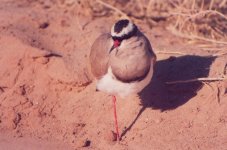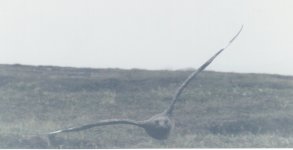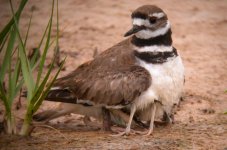Sal
Well-known member
Having written about rock dove hatchlings in an earlier thread got me to thinking about some fierce protectors of their offspring. One that must be known pretty well world wide is the plover. Our crowned plover for example will take on anything from an elephant to a mongoose, and the noise they make and the angry flying at and around and across the path of the invader are often enough to divert it to a new route. (Crowned plover pic attached - I know it looks one legged, but it isn't - just resting the other one!)Another nesting bird whose aggression I have experienced is the Indian mynah. As I was walking along a path beside a one storey building one day, two of them suddenly started dive-bombing me, shrieking all the time. One of them flew so low that it hit me on the head , drawing blood, and they kept up the attack until I was well out of range. I've seen them do this to cats and dogs as well. Yet if you walk very close to the nests of some birds, such as the doves, they will sit quietly the whole time. Who else has agressive birds/ has had experience of agressive birds in their country?







